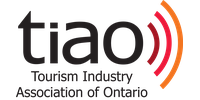
Did you know that small to mid-sized businesses with a well-planned sustainability strategy can increase their profits by up to 51%? Based on years of research and hands-on work with a wide range of businesses, author and speaker Bob Willard has identified that if a typical company were to use best-practice sustainability approaches, it could improve its profits by at least 51% within three to five years, while avoiding a potential 16% to 36% erosion of profits from doing nothing.
Even for those business people who don’t get as excited about sustainability as we do at Green Tourism Canada, we can all agree that increasing profits, when not at the expense of people or the environment, is a good goal.
But a goal without a plan is just a wish! So, here are the key elements to creating a sustainability plan for your own business. If you don’t feel like you have time to tackle all of these steps right away, download a copy of the recent presentation we did at the Tourism Northern Ontario Summit, that gives you a cheat sheet of actions based on the Green Tourism Criteria Checklist that we use in our assessments and certification of tourism businesses.
- Form a Green Team: Ensure that you have senior management, as well as front line staff. The GM, CEO or ED should be on your team. Commit to a monthly green team meeting, and up to 2-4 hours per month to complete actions coming out of the meeting.
- Gather your baseline data: What gets measured gets managed! Start tracking your consumption of key inputs and outputs, with energy/fuel, water and waste being the most important to start with. You can then expand to other things like consumables (paper, disposable cups, water bottles, etc.)
- Set some big, hairy, audacious goals: Crafting a lofty yet realistic vision and set of goals is an exciting and challenging task. What will your company look like if you are truly sustainable? Where do you want your company to be in five years, 10 years 25 years? Now what specific goals will help you get there? Pick three to six categories that you can create stretch goals for such as energy, waste, water, purchasing, etc. Some examples include reduce energy consumption by 35% by 2020, divert 90% of waste by 2025, or use 100% renewable energy by 2030.
- Brainstorm actions that you will get you to your goals: Once everyone agrees on your vision and goals, talk about each category one by one and get the team to offer ideas. Write them all down. There’s no such thing as a dumb idea. Map it all out then expand on the great ideas to turn them into actions. You could even put your big goals into a lunch room or staff area, and leave a comment box/board for staff to leave their ideas.
- Build Your Plan: You now have everything you need. It’s time to roll up your sleeves and solidify your plan. Using your favourite organizational program (we use Excel for the ease of sharing, updating and sorting), set up your document with the correct columns. Successful sustainability action plans have the following column headings or categories:
- Action (what you plan to do)
- Category (water, waste, energy, etc.)
- Action Steps (steps to complete)
- Team Member(s) (person responsible)
- Budget (actual $$ or low, medium, high)
- Timeline (use actual dates)
- Status (in progress, competed)
- Measurable (how is it measured?)
In each row, include a header line for the category as well as your goal, and then add in all the actions you brainstormed. Now fill in all the other columns. You can sort by the timeline, responsible person or whatever makes sense to your organization. Keep it updated, (monthly will do) and celebrate successes!
This is the sixth in a series of articles that is responding directly to what the tourism industry in Canada has identified as its top priorities when it comes to being green. If you’d like to share with us what’s important to you, please complete the survey we have created, in partnership with the Tourism Industry Associations of Canada, Ontario and British Columbia.
View original article by Green Tourism Canada
